“Oh, Romeo, Romeo, Wherefore Art Thou, Romeo?”
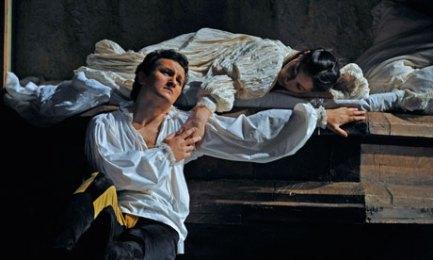 Piotr Beczala as Romeo, and Nino Machaidze as Juliette (Photo: Robbie Jack)
Piotr Beczala as Romeo, and Nino Machaidze as Juliette (Photo: Robbie Jack)
One of the more diverting aspects of “silly opera plots” is how certain stories get constantly recycled, over and over and over again. We’ve already touched upon one of them, i.e., that of the musician Orpheus, in which composers from the dawn of opera have attempted to remake his fable for each succeeding generation of theatergoers.
The same can be said for the plays of William Shakespeare, in particular one featuring sweet Juliet and her dashing beau, Romeo. Some of the better-known examples of operas based on the Bard of Avon’s most romantic work include Frenchman Charles Gounod’s five-act Roméo et Juliette; an aborted one by the Russian-born Peter Ilyich Tchaikovsky, which was turned into a concert-hall favorite, the Romeo & Juliet Fantasy Overture; and a fabulous choral/symphonic showpiece, also titled Roméo et Juliette, by that French firebrand Hector Berlioz.
In addition to the ones noted above, there are two other versions, in Italian, based not on Shakespeare but on the original source material from the early Renaissance period: the first, called The Capulets and the Montagues, was written by bel canto specialist Vincenzo Bellini; the second, going by the name of Giulietta e Romeo, was the work of a twentieth century composer, Riccardo Zandonai, who seemed to have a thing for medieval subject matter: his operatic adaptation of Gabriele D’Annunzio’s Francesca da Rimini, for example, comes from an obscure passage found in Dante’s Inferno.
And speaking of the Inferno, what about all those Faust operas we’ve heard so much about? Do you know Faust? He’s that old doctor, alchemist, mathematician or what-have-you from medieval times who supposedly sold his soul to the Devil — Mephistopheles, in this situation. His story was purportedly based on an actual historical figure, immortalized in English poet Christopher Marlowe’s Doctor Faustus, and later, in the gigantic, two-part epic poem, Faust, by German author Johann Wolfgang von Goethe, both of which form the basis for various operatic versions.
Wouldn’t you know it, but there also happens to be a French Faust — two of them, to be precise: one by Monsieur Gounod, the same fellow who brought you Roméo et Juliette; and the other by — you guessed it — Monsieur Berlioz, which he named The Damnation of Faust. It was staged a few years ago at the Met to great acclaim.
Moving right along, there’s even an Italian Faust. If you’ve been following my blog with any regularity, you know that I’ve written extensively about this next opera. Only this time, its composer, Arrigo Boito, one of Verdi’s finest librettists, decided on the name Mefistofele for its multi-syllabic title; and last, but certainly not least, there’s also a German Faust, called appropriately enough Doktor Faust, by the musically eclectic Ferruccio Busoni. Note to readers: despite his Italian moniker, Busoni studied and settled in Germany. So for all intents and purposes, he’s usually considered a Germanic composer — go figure!
Now the way I see it, with practice comes perfection: sooner or later, ONE of these fine gentlemen is going to get the Faust story right. That also holds true for the tale of Juliet and her Romeo. My own personal favorite, from among the wealth of operatic inspirations that are out there, happens to be an American setting: West Side Story from 1957.
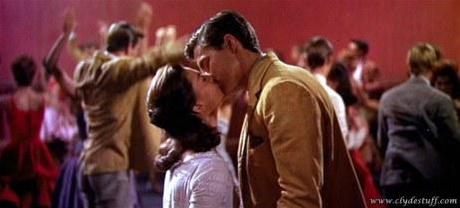
With a superb score by the great Leonard Bernstein, lyrics by the equally talented Stephen Sondheim, and choreography by ballet master Jerome Robbins, this modern street-gang rendition is possibly the most popular version yet.
We’re going to hear the first-act solo number, “Maria,” sung by Tony, our upper-Manhattan substitute for Romeo, with Maria sitting in for his fair Juliet. As you listen, keep in mind the work’s origins as a Broadway theater piece.
Let no one tell you otherwise: this magical moment fulfills all the requirements of an operatic air at its finest. It has warmth, beauty of tone, lyricism to spare, sweeping high-lying phrases, and a uniquely identifiable — and highly enjoyable — hit tune to please the masses. “Maria” is a special favorite of operatic singers, as we will hear in this lovely sequence by the late American tenor Jerry Hadley: http://www.youtube.com/watch?v=X_AArumG76U
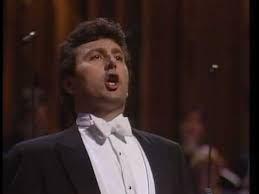
In 1985, Bernstein himself recorded this wonderful work with legit opera singers José Carreras and Kiri Te Kanawa as the star-crossed leads, along with mezzo Tatiana Troyanos, baritone Kurt Ollmann and contralto Marilyn Horne — all of them bringing a sense of seriousness and purpose to the venture that made one sit up and take notice at how near to perfection Bernstein and Sondheim had come to achieving the “operatic ideal” of blending music and drama with words and story.
Possession is Nine-Tenths of the Law
No doubt, Leonard Bernstein was one of the more formidable musical figures of the mid- to late twentieth century. Going back a bit, we can say the same thing about Richard Wagner, one of the mid- to late nineteenth century’s most controversial and influential musical figures of his or anybody else’s time.
Described by record producer John Culshaw as “a man possessed” (and with good reason), Wagner single-handedly changed the face of opera from a mildly passive form of entertainment to a politically charged spectator sport of earth-shattering proportions.
Within a span of about 40+ years (from about 1840 to his death in 1883), the Dresden-born titan managed to spread his far-flung theories of a “total artwork” of the future (or Gesamtkunstwerk in German) to the four corners of the globe.
You could say that the great Greek dramatists of the past — especially Aeschylus — in addition to the influences of his predecessors Gluck, Mozart, Carl Maria von Weber, Bellini and Giacomo Meyerbeer, all came together to find expression in one totally self-absorbed individual, one Herr Wagner.
The most representative of his body of work, which he termed “music dramas,” and the one that best illustrates our topic of “silly opera plots,” is his mighty epic The Ring of the Nibelung. Musicians, scholars, producers, fans and singers alike have spent a lifetime (if not a fortune) studying these complex scores.
But none of them came close to reveling in their “hidden truths,” as it were, as the late singer-actress Anna Russell did, in her comedic synopsis of Das Rheingold, Die Walküre, Siegfried and Götterdämmerung, the operas that make up the four-part Ring of the Nibelung saga, as it is most commonly known to operaphiles.
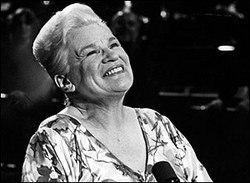
Ms. Russell, who was Canadian by birth, did to Wagner’s 16-hour opus what Gilbert and Sullivan had done to Verdi’s four-act Il Trovatore: she lampooned it to no end, taking the stuffiness out of its highfaluting, high-minded pretensions and bringing it down from the lofty heights of Valhalla to our own level of earthly silliness.
Anna Russell lived well into her 90’s before passing on in 2006. Fortuitously, in her absence we still have Ms. Russell’s lively text which we can read and enjoy to our heart’s content. Here is a reenactment of her classic analysis of The Ring of the Nibelung:
“Now, the first thing is that every person and event in the Ring cycle has what is grandly called a leitmotif. Now you don’t need to worry about that, it merely means a ‘signature tune.’ The scene opens in the River Rhine. IN IT! If it were in New York, it would be like the Hudson River. And swimming around there are the three Rhine Maidens… a sort of aquatic Andrews Sisters.
“The Rhine Maidens are looking after a lump of magic gold. And the magic of this gold consists of the fact that anybody who will renounce love and make a ring out of it will become Master of the Universe. This is the gimmick!
“Now up from underneath the river — as it might be, let’s say, the Holland Tunnel — comes a little dwarf called Alberich. Well, he’s an excessively unattractive fellow. He makes a pass at the Rhine Maidens, who think he’s perfectly dreadful, and so they’re not very nice to him. So he thinks, ‘I’m not going to get any love anyhow, so I may as well renounce it, and take this lump of gold, make the Ring, and become Master of the Universe.’
“Well, now, up here, as it might be on top of the Empire State Building, we find Wotan, the head god. And he’s a crashing bore, too. He and his wife, Mrs. Fricka Wotan, have had a castle built for them, called Valhalla, by a couple of giants named Fasolt and Fafner.
“Of course, the giants want to be paid for building this castle, and part of the giant-builders union scale consists of this magic ring that Alberich’s made. So Wotan goes all the way down from where he is to Alberich and takes the Ring away from him. Well, of course, Alberich is simply FURIOUS. So he puts a terrible curse on the Ring.
“But Wotan takes no notice. He takes the Ring up and gives it to Fasolt. Right away Fafner kills Fasolt to get the Ring himself. So Wotan knows that the curse is working. And this worries him, so he goes down to ground level to consult an old fortune-teller friend of his, Erda; she’s a green-faced torso that pops up out of the ground — at least we THINK she’s a torso, since that’s all anyone’s ever seen of her. And she says to Wotan, ‘Be careful, Wotan! Be careful!’ She then bears him eight daughters.
“These daughters are the Valkyries, headed by Brünnhilde… and they are the NOISIEST women. ‘Heiaha! Heiaha! Hojotoho! Hojotoho!’ Well, that’s the end of Part One.”
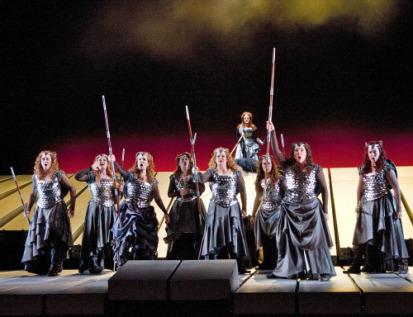
After that rendition, we just have to wrap this session up with a BANG, so put on your earmuffs, gang, and let’s give it up for the famous “Ride of the Valkyries” from Act Three of the opera Die Walküre: http://www.youtube.com/watch?v=FPcrqkViZKw
Wow! That was a BANG, all right! Everybody from Bugs Bunny, in the Warner Bros. cartoon “What’s Opera, Doc?” to director Francis Ford Coppola, in his Vietnam War epic Apocalypse Now, has used this musical interlude as foreground and background music. It’s a surefire audience pleaser!
There’s a lot more to Wagner’s Ring cycle, I assure you. So let’s pick it up at our next session, shall we? Until then, do your homework and listen to a few choice selections from some of the other works in The Ring of the Nibelung.
End of Part Two
(To be continued…)
Copyright © 2014 by Josmar F. Lopes

